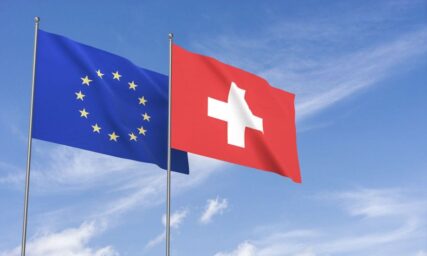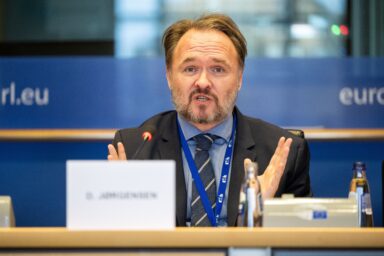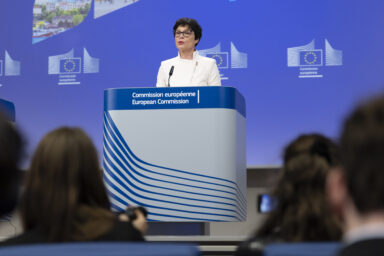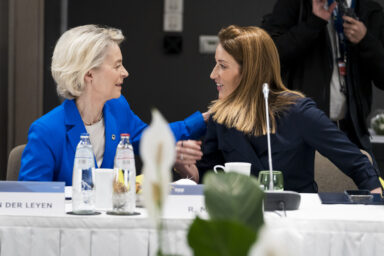According to leading European NGOs, EU member states have recently prioritized last-minute political agreements over scientific recommendations and environmental safety. Environmentalists are particularly critical of the system of international carbon credits approved by the Council, which is officially intended to help meet the EU’s 2040 emissions target.
The EU risks missing its climate goals, delaying green investments and losing credibility in the global climate negotiations, warns the European Environmental Bureau (EEB, the EU’s largest network of environmental NGOs). According to EEB, outsourcing climate action through international credits would hamper investment in the transition, delay emission reductions. It is also sending the wrong signal: that the EU is unable and unwilling to take the necessary steps at home.
Loosing environmental integrity
In EEB’s view, member states’ governments have over the past months peddled their 2040 climate target wish lists. That development resulted in a weak Commission proposal. And the additional amendments put forward in the Council negotiations deviate further from what should be the leading principles of EU climate policy: scientific and environmental integrity.
Without a robust target of at least 90 per cent net emission reductions, to be implemented within our own borders, the EU risks delaying vital investments in the transition at home. – Mathieu Mal, European Environmental Bureau
“To support global climate action, the EU must lead by example. National governments failed to do so, instead pushing for a watered-down 2040 climate target, riddled with debilitating flexibilities and not grounded in scientific advice. Without a robust target of at least 90 per cent net emission reductions, to be implemented within our own borders, the EU risks delaying vital investments in the transition at home,” said Mathieu Mal, Policy Officer for Agriculture and Climate of EEB.
In a statement for EU Perspectives, Alberto Vela from EEB acknowledged that “the Parliament’s position (on EU’s 2040 climate target) at least attempts to introduce stronger safeguards for the use of international credits.” However, Mr Vela still calls carbon offseting “a system that, in any case, risks hampering investment and delaying decarbonisation at home.”
Avoid international credits
Similar criticism has been voiced by Carbon Market Watch (CMW). In relation the the EU’s 2040 climate target, the organization talks about ’so-called flexibilities that are nothing more than loopholes’ and is particularly critical of the international carbon credits. Environment ministers and MEPs agreed on an 85 per cent emissions reduction target to be achieved domestically, which becomes a binding 90% only by relying on problematic international credits.
EU policymakers ’should make sure the EU not only buys high-quality international carbon credits but these should not be included towards its domestic targets. – Carbon Market Watch
CMW calls these credits highly problematic and argues that the EU should not count on emissions reductions achieved by other countries in order to do what it can and should do at home. “If EU policymakers intend to promote meaningful international climate action, then they should make sure the EU not only buys high-quality international carbon credits but also without counting them towards its domestic targets,” CMW said. Such approach, according to CMW, would help bridge the EU’s climate ambition gap while supporting international fairness and equity.
Climate Action Tracker (CAT) calls inclusion of international carbon credits “a disappointing break from the EU’s current climate laws which require its 2030 target and its 2050 net zero target to be met without offsetting.” CAT also warns that the EUs intension to achieve its proposed 2040 target with international credits is not compatible with the 1.5°C target set by the Paris Agreement.
You might be interested
Delaying ETS2 a ’major failure’
According to EEB, delaying the Emissions Trading Scheme for buildings and transport (ETS2) by one year will seriously undermine the EU’s ability to meet its 2030 climate targets. Originally, ETS2 should have been fully operational in early 2027.

ETS2 is designed to curb emissions in heating and transport, two sectors that together account for over one-third of total EU emissions. “ETS2 acts as a climate safety net, kicking in only when emissions exceed agreed limits. Weakening ETS2 means losing one of the few concrete tools we have to cut emissions this decade,” EEB says and calls delaying ETS 2 a ’major failure˝.
Scientists: focus on wind, solar solutions
In its latest report titled ’Scientific advice for the determination of an EU-wide 2040 climate target and a greenhouse gas budget for 2030–2050’, the European Scientific Advisory Board on Climate Change conducted a comprehensive assessment of the latest available scientifically based greenhouse gas emission scenarios for achieving climate neutrality in the EU by 2050, in line with the goals of the Paris Agreement.
According to the scientists, the recommended 2040 target and 2030-2050 budget can be realised by starting with the achievement of the current 55 reduction reduction target by 2030. Additional short-term emission reductions would further decrease the EU’s cumulative emissions until 2050, and thus increase the fairness of the EU’s contribution to global mitigation. The assessed scenarios reveal several common features that are important to consider. One notable aspect found in multiple scenarios is the significant deployment of wind and solar energy, combined with electrification of energy use and scale-up of fossil fuel alternatives such as hydrogen.
Pathways combining this technology scale-up with efficiency gains can lead to a near-complete decarbonisation of the EU power sector by 2040. That includes phasing-out of coal-fired electricity generation by 2030 and unabating gas-fired generation by 2040. These pathways also minimise the EU’s reliance on removal of CO2 from the atmosphere thereby minimising the risks associated with relying on these approaches. However, even these pathways require carbon removal at scale in order to achieve climate neutrality.











